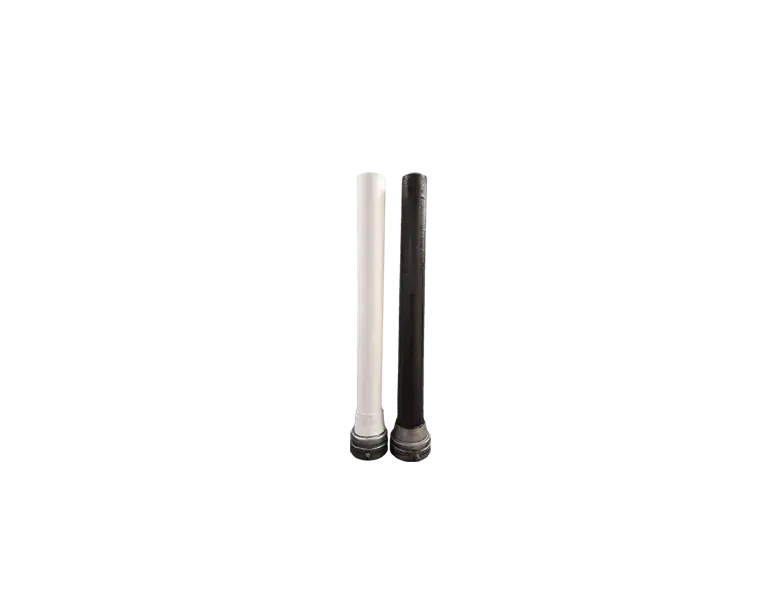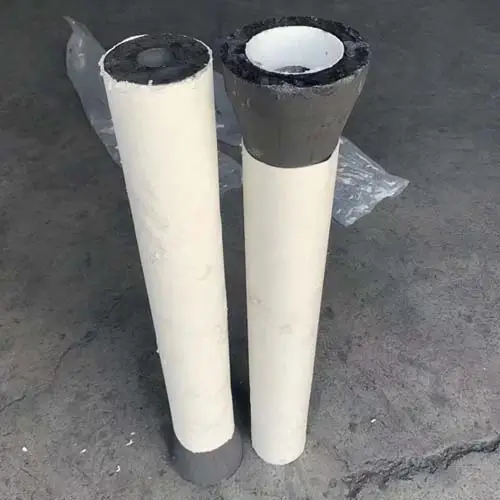Since the 21st century, with the enlargement of continuous casting equipment, the amount of steel passing through the shroud has gradually increased, from less than 1t/min to more than 7t/min at present. The increase in the amount of steel per unit time causes rapid erosion of the inner wall. Therefore, inner wall erosion has become a decisive factor in the life of a large number of long nozzles.
The one-to-one general relationship without other complex factors that change the relationship was studied, and it was pointed out that there is a direct or inverse relationship between various performance indicators of refractory materials. If you want to improve the performance of one, you need to reduce the performance of the other. The relationship between porosity and thermal shock resistance is an example. When porosity increases, there are more vacancies in the microstructure to prevent crack expansion, so the thermal shock resistance improves. When porosity decreases, thermal shock resistance decreases ( That is, a proportional relationship).
1.Optimization of carbon content in long nozzle
In order to improve the thermal shock stability of the long nozzle, a higher graphite content is generally added. However, graphite carbon has low strength and is easily washed away by high-speed steel liquid, thereby reducing the life of the long nozzle. Therefore, it is a feasible method to optimize the carbon content of the long nozzle and take into account the scourability and thermal shock stability of the material. Experts have developed a long-life aluminum carbon long nozzle to achieve long life by reducing the carbon content and improving the bonding strength of the binder.
2.Particle size composition optimization
The optimization of particle size composition plays an important role in the formula design of long nozzle. Particle packing theory generally includes close packing of discontinuous size particles and close packing of continuous size particles. They believed that the tightest packing was formed when small particles happened to fill the gaps between large particles, and then expressed the expression of multi-particle discontinuous size packing as an equation, as shown in formula (1).
CPFT⁄100=(γlogD−γlogDs)⁄(γlogDl−γlogDs)(1)
Formula (1)
In formula (1): CPFT is the cumulative percentage of raw material mass below a certain particle size, γ is the ratio of the particle mass of two adjacent particle sizes, D is the particle size of the particles, Ds is the particle size of the smallest particle, and Dl is the largest particle. granularity.
Andreassen proposed the theory of close packing of continuous-sized particles. He believed that the distribution of particles is in the same form, that is, statistically similar, even if the particles increase. The theory is represented by an equation, as shown in formula (2).
CDFT⁄100=(D⁄Dl)q
Formula (2)
In formula (2), q is a value representing the particle size distribution coefficient. Comparing the above two formulas, there is no minimum particle size limit in equation (2), and the minimum particle size can be infinitely small. Dinger et al. introduced the idea of finitely small minimum particle size and modified the Andreassen equation, such as formula (3).

The maximum packing density can be obtained by using discontinuous particles, but particle segregation and uneconomical conditions exist in actual production. It is undoubtedly a better method to select continuous particles with reasonable gradation and adjust the proportion of each particle level to achieve a high filling density. When the particle gradation matches the tightest packing, the volume density of the molded material is the highest. Therefore, we adjust the particle gradation of the material so that the material’s porosity, volume density, flexural and compressive strength and other performance indicators reach the required range, and obtain materials with excellent thermal shock resistance and good erosion resistance.

Research results show that in order to ensure high thermal shock stability of the “three major parts” of continuous casting, a large amount of flake graphite (>20%) is usually added. The larger the particle size ratio, the worse the uniformity of the material will be. It is easy to form graphite areas. At the same time, the greater the risk of cracks at the contact interface between coarse particles and graphite, thus reducing the thermal shock stability of the sample. However, when the amount of fine powder is too large, the strength is too low and cracks are easy to expand. Such thermal shock stability will also become worse. In terms of improving thermal shock resistance, the optimal particle size composition is a ratio of aggregate to fine powder of 40/60.
3.Choose the appropriate amount of binding agent to add
Appropriate addition of binder can achieve appropriate porosity and strength indicators. It was studied that while the ratio of aggregate, fine powder, micro powder and graphite remained unchanged, resin was selected as the binder and granulated using a high-speed granulator. Through the sieving analysis of the produced mud, the scanning electron microscope morphology observation of the sample, and the comparative analysis of physical performance indicators, the influence of the resin addition amount on the granulation effect was studied. The results show that as the amount of resin added increases, the diameter and number of false particles formed in the mud increase. The apparent porosity and volume density of the sample begin to be mainly affected by the granulation effect, and then gradually change to be affected by the amount of resin added. Affected by the influence, the normal temperature compressive strength and flexural strength of the sample showed a gradually increasing trend.
4.Introduce low thermal expansion coefficient materials
Experts developed a preheat-free long nozzle by adding fused quartz and zirconium mullite, with a service life of between 4 and 7 hours. On the basis of studying foreign technologies, Wang Jun and others used high-grade refractory raw materials such as Sialon and special binders, and experimentally developed a manufacturing and firing process that is compatible with the preparation technology to solve the problem of thermal stability and erosion resistance of the long nozzle. , corrosion resistance, and achieved good comprehensive performance of bake-free long nozzle products. In order to improve the thermal shock stability, aluminum carbon long nozzles generally add low-expansion refractory materials. Such as fused quartz, zirconium mullite, silicon carbide, etc.

